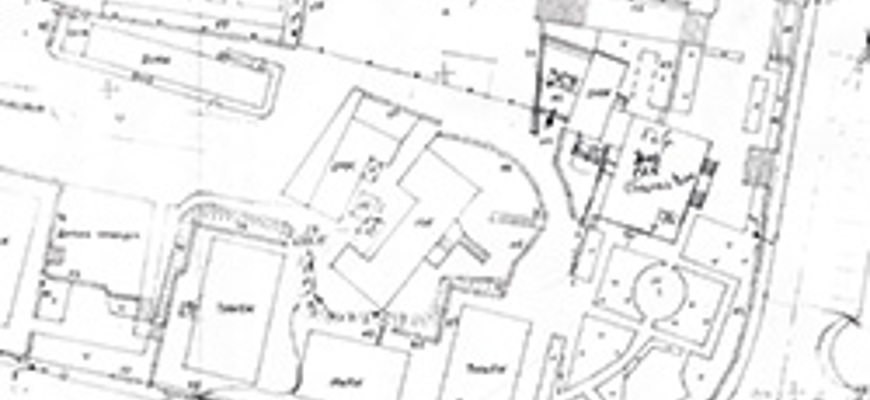Plans reports: yes or no?

Under the 2012 Act regime, mapping is key. Where a property is being mapped by RoS for the first time, the deed or title must describe the property so that its boundaries can be delineated on the cadastral map. There can be no overlap with an already registered area, and there are stricter requirements than before regarding mapping of encumbrances and servitudes. If the statutory requirements are not met, RoS will reject the application.
Aside from the statutory requirements, a check of sasine title deed boundaries against the physical boundaries shown on the Ordnance Survey map will continue to be important in order to determine whether or not there are any potential possession issues; while the 2012 Act focuses on overlaps, it can also be critical for the parties to know that there are no underlaps either.
The new plans reports can, in many cases, provide important information and assurances. However, there appears to be some uncertainty as to which level of report is required and when. Between the designated day and the end of June, RoS dealt with more than 16,000 plans reports. Of these, around 75% were level 3 reports. This is the most comprehensive report available, but for many transactions it is not actually necessary.
Deciding which report is necessary
Dealings with whole (registered land)
A plans report is not necessary for most dealings with whole of registered land. For the vast majority of dealings (disposition, standard security, discharge, improvement grant etc), the keeper will not be creating a new cadastral unit, or otherwise dealing with the plan or boundaries. All she will be doing is, for instance, substituting one owner’s name for another on an existing title sheet.
If, however, the dealing relates to a deed that may have an impact on the cadastral map, such as an agreement constituting a new burden over part of the property (which is treated as a dealing with whole rather than transfer of part), a plans report may be helpful to ensure the relevant feature on any deed plan is capable of plotting onto the cadastral map. Here the considerations are the same as for transfers of part.
Transfer of part (registered land)
Where a developer is using the development plan approval (DPA) service, there may be little merit in obtaining a plans report too – provided the deed plan refers back to an approved and current development plan, the solicitor can be assured there will be no overlap with an adjacent title, and that the property description will be acceptable to the keeper.
Where DPA has not been used, the risks of overlaps and to the suitability of the deed plan remain. Where new deed plans are concerned, developers should, and in most cases do, follow the keeper’s deed plan criteria. Provided you are satisfied they have, then a level 1 report should be sufficient. If a copy of the identical plan has been used as the basis for an advance notice and has been accepted onto the application record, the plan will have met the deed plan criteria. If in doubt, a level 2 or 3 would be appropriate; the former where there are no shared plots, rights or encumbrances, the latter where there are.
However, if the part being transferred falls wholly within (and is surrounded by) the seller’s retained land – in other words, if all of the boundaries are brand new and do not touch any title other than the parent title – the risk of an overlapping registered title is remote. As such, again provided you are content that the deed plan meets published criteria, no report should be required. In most cases though, there are likely to be at least some boundaries on the edge of the parent title, and to check whether there are registered overlaps, a level 1 report may be needed.
Sasine land (first registration)
Since transactions based on sasine deeds usually carry a higher level of risk, a plans report will normally be required to at least check for registered overlaps (level 1 or above).
The decision to order a level 2 or 3 report will depend in large part on whether or not a new deed plan is being used to supplement the sasine deed description and/or historic deed plan. A new deed plan, provided the cartographer complies with the keeper’s deed plan criteria, should be sufficiently plottable onto the cadastral map. If the plan is OS based (which should be encouraged), there is no need to check it against the OS map (just as a new OS-based deed plan would not have merited a P16 report under the previous legislation); as such a level 1 report should suffice.
If the existing sasine description is to be used, the risk of this not being sufficient for RoS increases. In any case, solicitors would usually want to check the sasine description against the OS boundaries to find out whether, for example, there is a discrepancy between the title boundaries and a fence line shown on the OS map, since this can point to potential competing interests. Therefore, a level 2 or 3 report would be required if no new deed plan is being used.
It is worth noting that plans reports cannot be obtained for all sasine titles. Complex or large titles involving many split-offs will not routinely fall within the scope of a standard report.
There are a few options for dealing with such complex titles. If registered overlaps are the main concern (warranties in missives can deal with most other issues), a new OS-based plan could be created at least to obtain a level 1 report. Of course, if the boundaries are drawn up formally and exact rather than indicatively, this plan could also be used as a deed plan. This will often be preferable to the parties completing without knowing whether the sasine boundaries can be plotted by RoS.
The title investigation service from RoS or elsewhere can also be used for these larger or more complex areas to assist in plotting boundaries, checking overlaps and any other mapping issues.
If all else fails, the client should be advised of (and accept) the risk before the parties proceed to completion and registration.
| Types of plans report | |||
| Type | Purpose | ||
| Identify registered overlaps | Confirm that deed plan (or sasine title) is plottable onto cadastral map | Identify certain other rights if already plotted on cadastral map, e.g. unwritten servitudes | |
| Level 1 | Yes (by title number) | No | No |
| Level 2 | Yes (by title number) | Yes | No |
| Level 3 | Yes (shown on a plan) | Yes | Yes (shown on a plan) |
| In summary: which report and when? | ||||
| Registered title | Dealing with whole | No report | ||
| Dealing (or transfer) of part | DPA used | No report | ||
| DPA not used | Wholly surrounded by parent title | Overlaps unlikely, usually no report | ||
| Bordering another title | Level 1 (if deed plan criteria complied with); level 2 or 3 (if not sure that deed plan criteria compiled with, should be rare) | |||
| Unregistered (sasine) title | New deed plan being used | Level 1 (optionally, level 3) | ||
| Existing sasine boundaries being used | Simple title (up to five deeds involved, not rural/large area) | Level 3 | ||
| Complex, rural or large title | No report possible. Either (a) prepare new deed plan and order plans report as above; (b) arrange title investigation or alternative service; or (c) advise client and proceed if they take a view on risk. | |||
In this issue
- Caught by the cartels
- Refugees: why article 31 matters
- Virtual victims?
- How much should trainee solicitors be paid?
- Reading for pleasure
- Opinion: Malcolm Combe
- Book reviews
- Profile
- President's column
- Plans reports: yes or no?
- Farewell Brussels?
- Mind games
- Justifying discrimination
- Advance to Australia fair
- People on the move
- Reason for the rules
- Beware the (new) transfer traps
- Pension schemes: the VAT rules change
- Tenancies and the Land Reform Bill
- Scottish Solicitors Discipline Tribunal
- Are you ready for counterpart signing?
- Chapter and verse
- Street Law: a wildfire success
- Law reform roundup
- ADR directive affects complaints
- From the Brussels office
- Transforming perceptions
- Litigators in a fix?
- Unlucky Fridays?
- Flag up, or keep mum?
- Send in the auditors






